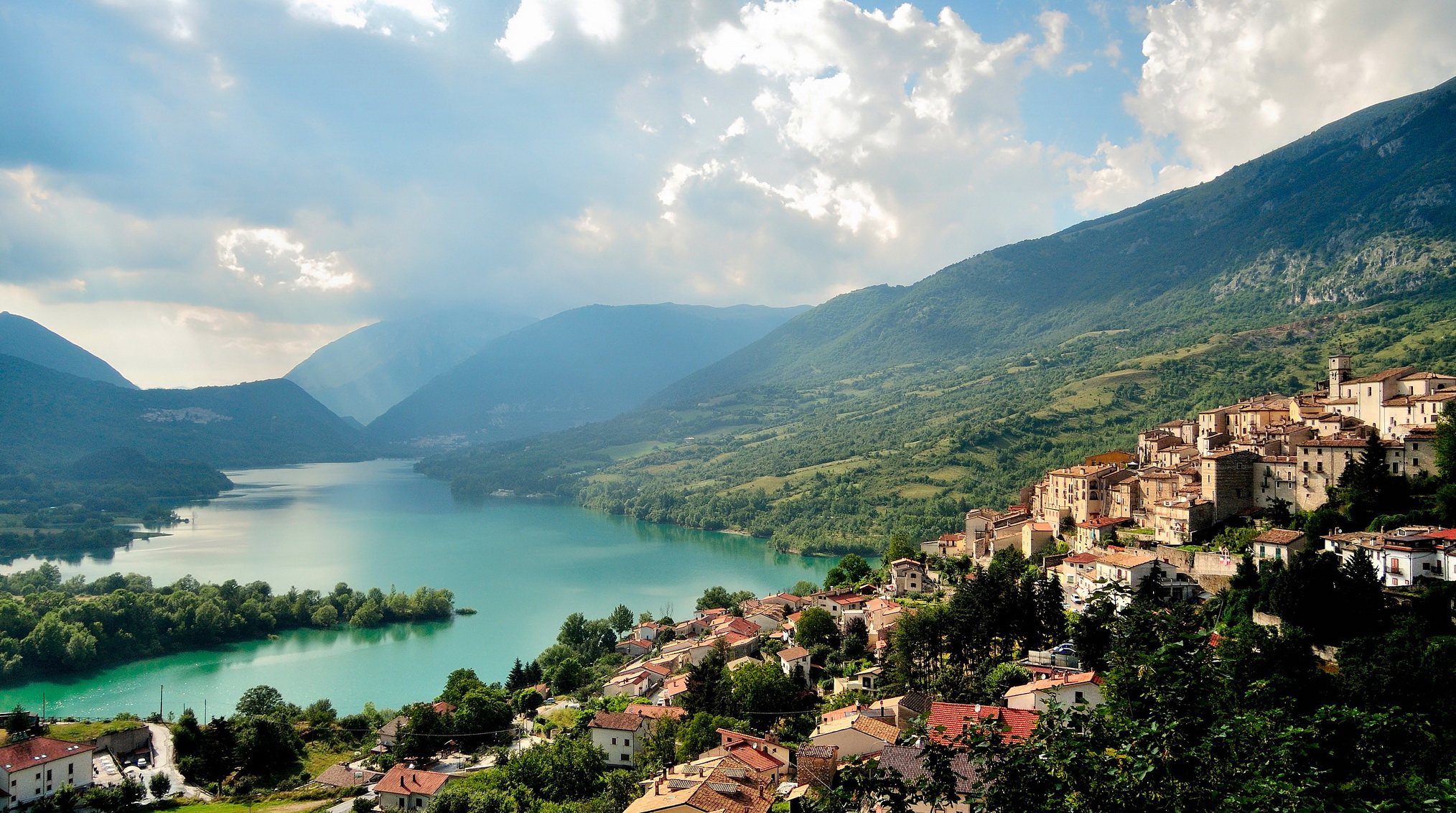
Abruzzo
Surrounded on the north by the Marche, west by Lazio and south by Molise, the region of Abruzzo spreads out from the Apennines Mountains to the Adriatic Sea. The landscape is austere with a primitive beauty, untamed mountains and oasis of unspoiled territories where the National Parks of Abruzzo, of Sirente-Velino, of Majella-Morrone and Gran Sasso-Laga are located. In particular, the Park of Abruzzo is a refuge for wild wolfs, for the Marsican Bear, for wild boars and numerous animal species.
The mountainous terrain of the region does not favor agriculture and sheep rearing is the predominant economic activity. The roasted or baked lamb is the preferred dish, and the baby lamb is stewed with onions, celery, olives, dry tomato and wine. Mutton cooked with onions, tomato, pork, rosemary and white wine is a special occasion dish and its sauce is used as a condiment for the pasta served with it. Suckling pigs are roasted, the older and taster pork end up as sausages, salami, or prociutto.
Cheeses and sheep milk products are manufactured; the saffron mozzarella is a local specialty. The coastal strip facing the Adriatic Sea is narrow and has no inlets and has no good ports. Varieties of fish are caught and are a good source of food. The rivers and lakes provide trout and carp in large quantity, and the ingenuity of the people found original ways to cook it.
The province of Teramo is famous for the ‘ndocca-‘ndocca, a stew made with pigskin, ears, snout, feet and small chunks of meat boiled for a few hours in water with herbs and spices and when tender is cooked for an additional hour with the addition of chopped tomato. Stoccafisso, dry codfish, is stewed with tomato, celery, onions and abundant red hot pepper.
In L’Aquila trout are stewed with tomato or baked with herbs and the locally produced saffron; in the area, liver sausages are made sweet with honey and hot with red pepper called pazzo, crazy. L’Aquila is famous for the panarda, a banquet for important and great festivity consisting of a meal of many courses, over forty, and lasting for almost 12 hours.
The southern part of the region was inhabited by Samnite tribes, they were mostly hunters and fishermen, their cooking was done on the spit or in the oven; they consumed a lot of legumes and milk products. At the mouth of the river Pescara, the harbor city of Pescara was founded. Pescara has one of the largest fishing fleet in the Adriatic Sea. Fish is part of the local diet together with local vegetables and legumes.
Skate and palumbo, the sand shark, are prepared alla Scapece, fried and marinated a few days in a sauce made with onion, oil, vinegar garlic, sometimes saffron produced at L’Aquila, octopus is made al Purgatorio, in purgatory, with a spiced tomato and red chili pepper sauce; fillets of mackerel are baked with breadcrumbs after being marinated in a mixture of vinegar, oil, garlic, capers and chili pepper.
In Chieti many types of pasta are made, but the area is mostly famous for the maccheroni alla chitarra, square spaghetti, usually served with a tomato and pancetta (not cured bacon) sauce and the local pecorino cheese. Trebbiano d’Abruzzo and Montepulciano are among the most popular wines.
